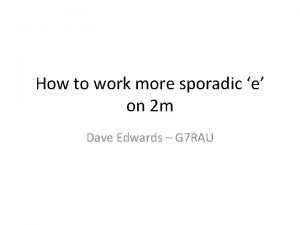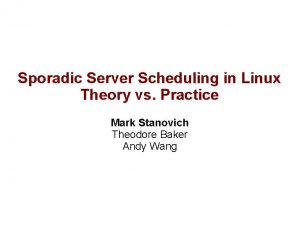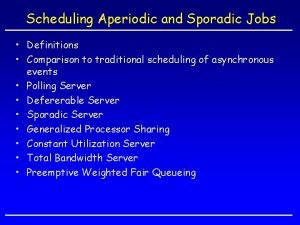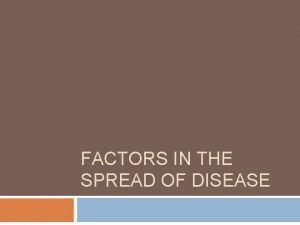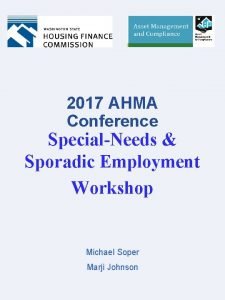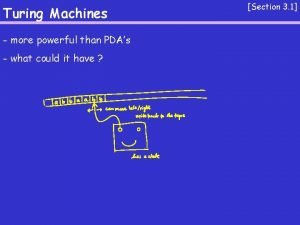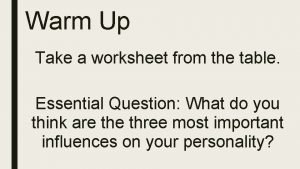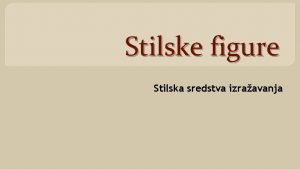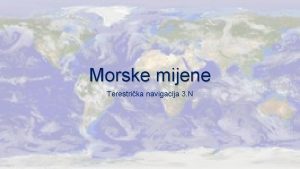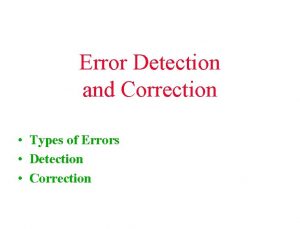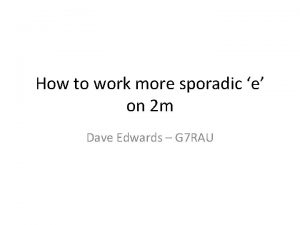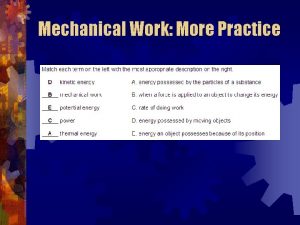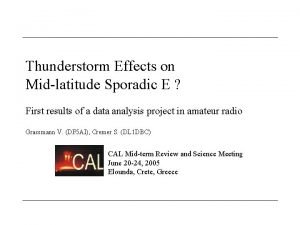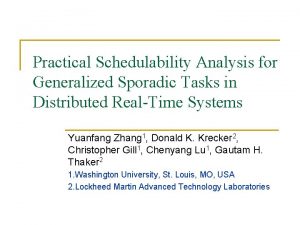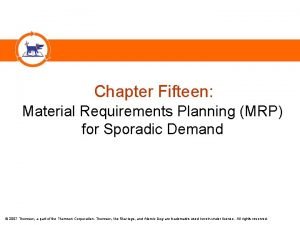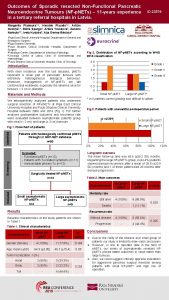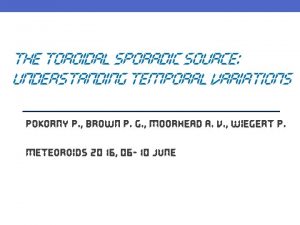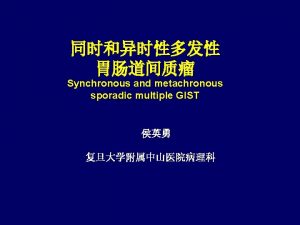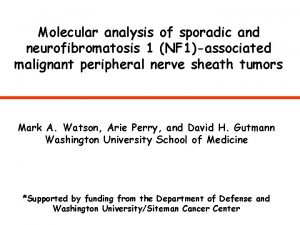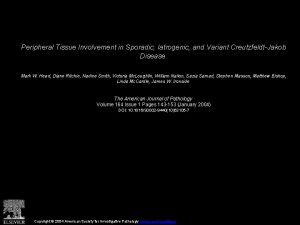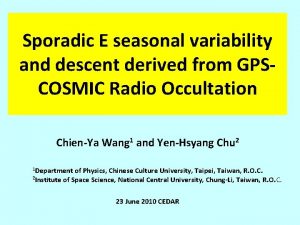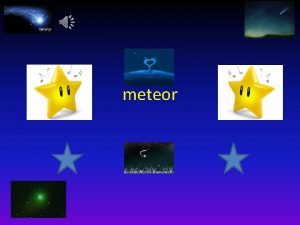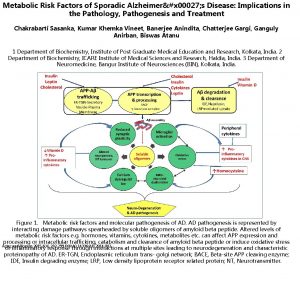How to work more sporadic e on 2

















































- Slides: 49

How to work more sporadic ‘e’ on 2 m Dave Edwards – G 7 RAU

The ionosphere (1) The ionosphere is broken down into 4 defined areas and a very rough guide follows. 1. D layer: 65 to 80 km, average height 70. This absorbs signals at HF but can reflect signals at VHF (D layer ‘iono-scatter’ well documented on 6 m) 2. E layer: 80 to 130 km, average height ~108 km. On HF useful for ranges around 2400 km single hop, this can provide enough ionisation to reflect VHF and above! 3. F 1 layer: 140 to 250 km, average height 200 km (seasonally variable). Provides HF long distance communication. 4. F 2 layer: 250 to 450 km, average height 350 km (seasonally variable). Provides HF long distance communication. Note that F 1 and F 2 can combine after nightfall to a height ~250 km (seasonally variable).

The ionosphere (2)


Sporadic ‘e’ (1) • Sporadic ‘e’ is the result of sporadic clumpy ionised patches in the e layer region that enable much higher frequencies to be used for communication than the surrounding ‘standard’ e layer. • These ‘clumps’ are likely caused by wind shear (winds in different directions) exciting ions (much of this from meteors) making a thin ionised layer suitable for reflecting signals at VHF.

Sporadic ‘e’ (2) • Sporadic ‘e’ can occur at any time of the year but the main season in the northern hemisphere is between April and September (Peak June / July) with a minor season in December and January. • There a number of high density meteor showers in the summer and added sun intensity seem to be some of the core ingredients for sporadic ‘e’ to happen.

800 April 1 April 4 April 7 April 10 April 13 April 16 April 19 April 22 April 25 April 28 May 1 May 4 May 7 May 10 May 13 May 16 May 19 May 22 May 25 May 28 May 31 June 3 June 6 June 9 June 12 June 15 June 18 June 21 June 24 June 27 June 30 July 3 July 6 July 9 July 12 July 15 July 18 July 21 July 24 July 27 July 30 August 2 August 5 August 8 August 11 August 14 August 17 August 20 August 23 August 26 August 29 September 1 September 4 September 7 September 10 September 13 September 16 September 19 September 22 September 25 September 28 Number of QSOs 2000 2 m es qso count in Europe 1994 to 2009 1800 1600 1400 1200 1000 2 m es qso count 600 400 200 0

600 400 200 0 135 117 103 62 63 85 1400 107 80 83 1000 93 97 100 72 57 1200 79 70 800 231 45 768 9 10 11 12 13 14 15 16 17 18 19 20 21 22 23 24 25 26 27 29 28 30 31 32 33 34 35 36 37 38 39 40 41 42 43 44 45 46 47 48 5049 5251 53 54 55 56 58 59 60 61 64 65 66 6768 69 71 73 74 76 77 78 81 82 84 86 87 88 89 91 9290 94 95 96 98 99 102 101 104 105 106 108 109 110 111 112 113 114 115 116 118 120 119 122121 123 124 125126 127 128 129 130 132 131 133 134 136 137 138 139 140 141 142 143 144 145 146 147 148 149 150 151 152 153 154 155 156 157 158 159 160 161 162 163 164 165 166 167 168 169 170 171 172 173 174 175 176 177 178 179 180 181 182 183 QSO count 75 2000 2 m es qso count in Europe 1994 to 2009 1800 1600 2 m es qso count

9 April 1 April 4 April 7 April 10 April 13 April 16 April 19 April 22 April 25 April 28 May 1 May 4 May 7 May 10 May 13 May 16 May 19 May 22 May 25 May 28 May 31 June 3 June 6 June 9 June 12 June 15 June 18 June 21 June 24 June 27 June 30 July 3 July 6 July 9 July 12 July 15 July 18 July 21 July 24 July 27 July 30 August 2 August 5 August 8 August 11 August 14 August 17 August 20 August 23 August 26 August 29 September 1 September 4 September 7 September 10 September 13 September 16 September 19 September 22 September 25 September 28 10 2 m es count of daily occurrences in Europe 1994 to 2009 8 7 6 5 4 2 m es day 3 2 1 0

0 172 173 177 178 179 180 181 182 183 156 160 161 163 164 165 166 147 148 151 138 141 142 143 114 1 2 3 4 5 6 7 8 10 11 12 13 14 15 16 17 18 19 20 21 22 24 25 26 29 30 31 33 34 35 37 39 40 41 44 45 168 171 174 175 176 140 144 145 146 149 150 152 153 154 157 158 159 162 132 124 52 23 27 28 32 36 38 42 43 46 9 167 169 170 155 136 139 120 122 125 127 129 130 110 78 56 47 48 50 128 112 113 115 116 89 69 73 49 51 54 131 133 137 126 118 119 121 107 109 111 92 77 79 82 68 53 55 58 59 61 123 71 74 75 76 80 84 85 86 87 88 91 94 95 96 98 99 102 103 104 105 106 60 62 63 117 100 90 81 64 65 57 Count of years when es occurred 134 108 97 101 83 72 67 135 93 66 70 10 2 m es count of daily occurrences in Europe 1994 to 2009 9 8 7 6 5 4 2 m es day 3 2 1

6000 Hourly 2 m es QSOs from 1994 to 2009 5000 No of Qso's 4000 3000 2000 1000 0 1 2 3 4 5 6 7 8 9 10 11 12 13 14 15 16 17 18 19 20 21 22 23 24

Hourly 2 m es full week to weekend comparison 10000 Hourly 2 m es full week 9000 8000 7000 6000 5000 hours range 4000 2 m es qso count 3000 2000 1000 0 1 2 3 4 5 10000 6 7 8 9 10 11 12 13 14 15 16 17 18 19 20 21 22 23 24 Hourly 2 m es Saturday and Sunday 9000 8000 7000 6000 5000 hours range 4000 2 m es qso count 3000 2000 1000 0 1 2 3 4 5 6 7 8 9 10 11 12 13 14 15 16 17 18 19 20 21 22 23 24

Sporadic ‘e’ (3) Single hop sporadic ‘e’ on 2 m in general enables short term contacts to be made with stations between 1200 km and 2400 km (there are exceptions to this) and some of the factors to consider are: 1. Activity 2. E layer height 3. Maximum Usable Frequency 4. Station(s) ERP and location. 5. Your distance from the reflection point

I want to work more e’s on 2 m. . • A large number of hams are only aware that something is happening on 2 m when they hear the DX rolling in on 144. 300 or they see the spots arriving on the DX Cluster. For inexperienced hams it is hard to tell what propagation mode is happening. If you are one of these people then the following 15 minutes will be of interest (I hope!).

1: Start at ‘the bottom’ To get a better understanding of how sporadic ‘e’ patches intensify we need to start at HF. • Quiet Day, no es? • Can 14 MHz shed any light? • 10 m beacons as useful indicators?


2: Moving up • Signal strengths on beacons are useful • Strong beacons on 10 m so time to check 50 MHz • EA 4 beacon on 10 m 589, on 6 m 549, coincidence? • Keep records or a mental note on strengths to see the correlation.


3: Getting a feel for things • Including distance as well as signal strength in mental notes. • Use HAM stations in your MUF analysis • EA 7 on 6 m 59+10, straight to 144. 300 and CQ SPORADIC or is there more we need to know about the EA 7. .


4: Stagnated? • • • Consider all together gained information: QRB Heard stations ERP Signal strengths Distance, special consideration to what is possible on higher bands due to intensity needed from the es patch


5: On the move again • Is there es DX being spotted on the DX Cluster? • Does it look interesting for us? • Do any of the spots look like there might be high MUF patches?


6: Getting exciting • • 4 m Open to CT 3 m open to EA and CT VOR open to Madrid It is looking GOOD!



7: Does it always happen? • Sometimes the MUF never reaches high enough for 2 m even though it looks great • Sometimes it drops and then rises again later • On the bright side we have learned a lot about tracking the rising es MUF. • Using simple methods and applying some thought nearly paid off.

8: 2 m is open and I am in the opening! At last, MUF continued up and 2 m open! I cannot break the pileups on 144. 300. . Look around as not all the DX is on 144. 300. Use seek and pounce sometimes or find a quiet frequency and CQ • Check on 145 MHz FM, you might be surprised! • •

What if I am not in the shack. . It would be great if you could give up work for the summer and ‘Move In’ to the shack but for most of us this is never going to happen. So how can we keep in touch with how the es MUF is doing so if an opportunity arises we can get on air? 1. Buddy phone system. Get a small group of ham friends to pass each others phone numbers and if anything exciting happens you can alert each other. 2. Utilise your FM car radio when mobile. Leave the receiver on 87. 6 MHz, if the MUF is high enough you might hear stations via es coming in and depending on what you are out mobile for you might be able to head home at short notice. 3. Keep an eye on the DX cluster if you have a PC available at work. Unless you are very restricted in access or have a draconian boss who expected you to concentrate 110% on work you can normally sneak a quick look at what is happening on VHF and maybe able to get home if it looks like opening. 4. If the MUF gets high over an area in the morning it will often repeat in the afternoon. Similarly if high MUF in the afternoon this can repeat the following morning so if you are not in the shack for ‘phase 1’ you might be able to make it for ‘phase 2’. 5. If you have no way of knowing what is happening then forget it and enjoy whatever you are doing instead. 2 m will open again and it is not worth worrying about, life is too short. .

Demystified? • With a little effort you can learn a lot. • Receivers or a multiband rig needed, no great outlay • Don’t get too cocky, you will get caught out!

Using tools to help – DX Cluster We have already mentioned using the DX Cluster to assist in helping gather information but remember it is a two way affair that is needed if we are all to help each other work more DX on 2 m via ES. Here I believe are a few useful pointers (and not just for es spots): 1. SPOT wisely; tell people the propagation mode, locators and rst for the contact. 2. Do not spot ‘cannot hear’ or ‘nil es’, these are junk and a waste of space 3. Do not advertise using the DX Cluster, it is for spotting not selling a product even if the product is free. 4. DX Cluster spots are not for chatting, use KST, DXC Talk or if you have an announcement that you feel is useful to other hams then use DX Cluster announcement. 5. Spot the DX, don't spot you on your QRG working the DX, this is unfair as people will look your frequency for the DX. . Odd circumstances excluded i. e. you just worked RA 6 on es and you want others to know it is open. 6. If you feel you need to spot MUF @ 144 then use a Q in front of the call, i. e. QMUF 144 M = DXCC entity of nothing whereas MUF 144 M = MU/Guernsey 7. If you make a mistake with a spot then correct it with a good spot. Don’t leave people wondering if you really did work a W 5 on 144. 300 via multi-hop es. . . 8. An example of a good spot: DX de G 7 RAU: 70251. 3 OM 3 DA IO 90 IR<ES>KN 09 DB 599 qsb gl!

Es Statistics based from processed DX Cluster data for 2009 • 77 UK stations spotted 2 m ‘es’ • Top was G 4 LOH-Tim who spotted 88 2 m ‘es’ occurrences • 14 of the top 20 2 m ‘es’ spotters are active Live MUF users (3 more possibly. . . ) • 45 days of 2 m ‘es’ were recorded in Europe • 628 2 m es qso’s spotted by UK stations on 30 separate days (top year was 2006 where 819 UK spots for 2 m es on 47 separate days ) • 477 UK stations spotted sporadic e qso’s on 50, 70 and 144 MHz, world-wide excluding UK was 6485 stations. • Special thanks to Dirk Koopman - G 1 TLH for all his hard work with DX Spider, the backbone of the DX Cluster network

Using tools to help – Internet The internet has a wealth of information and tools to assist in all types of propagation studies. Just to recap: • Web Based DX Clusters • Beacon frequency and information lists • VOR airport beacon frequencies (108 MHz to 118 MHz) • OIRT Frequencies (Eastern European FM broadcast 65. 84 to 74 MHz) • VHF TV Audio frequencies • VHF related chat pages • Stacks of information about sporadic e, some very good, some not so good and even some which will take you for a trip into fantasy land to meet the elves. . .

Live MUF – What is it Live MUF is a DXC (cluster) telnet client which attempts to resolve propagation modes from spots and also attempts to calculate sporadic e possibilities purely based on incoming data from the cluster. It has great circle mapping (GCM) built in to the app for live mapping of spots. Live MUF also can be used as a world wide converse telnet client, ON 4 KST telnet client and DXC at the same time. For DXC it has it's own built in telnet server so 1 connection to the internet and all intranet connections via this, as used by some contest stations.

Live MUF in operation in my shack

Live MUF – Development Live MUF started life back in 1997 with the primary goals to collect locators for as many hams as possible and to produce MUF information based on cluster data. There are over 1500 users world -wide of the latest version and still a fair number using Live MUF V 6. Live MUF is still intended as a tool to help visualise what is happening but it will never replace the need for the user to actively investigate conditions through listening on their radios. The maps in Live MUF are probably the most useful feature giving a visual side to what is happening. These are all GCM and have some interaction features with users. The application was written by me with help from many hams. Special thanks to Keith G 4 FUF and Geoff G 3 NAQ for correcting most of my maths and being inspirational in many of the features. Thanks to all hams (too many to list!) who have taken an active part in this project.

Live MUF maps and scenarios Next we are going to look at a real sporadic e event and some maps from 17 th June 2003. This will be followed by looking at normal to extreme possibilities that can happen in a 2 m sporadic ‘e’ event.

Live MUF – Maps (1)

Live MUF – Maps (2)

Live MUF – Maps (3)

Live MUF – Average

The ionosphere (revisit)


1 st June 2005 ~18: 08. G 4 RRA – RN 3 QR e’s QSO 3060 km

16 th July 2009 17: 00 to 18: 00 on 2 m. PA/DL/G/F/EA 1/EA 4 to EA 8 and CT 3 2009 -07 -16

Aurora mapping (future feature)

What does Live MUF V 7 look like? Hopefully my laptop will behave itself and we will have a brief look at what it does. Followed by Questions / discussions. Especially interested on how we encourage ‘new blood’ into chasing 2 m sporadic e as a common issue lately is always the same stations seem to be aware and QRV. .

A few links • Mid-Latitude Sporadic-E (Es) - A Review by Michael Hawk • Live MUF by G 7 RAU - Dave Edwards
 More more more i want more more more more we praise you
More more more i want more more more more we praise you Lirik lagu more more more we praise you
Lirik lagu more more more we praise you Sporadic e map
Sporadic e map Sporadic server
Sporadic server Sporadic disease
Sporadic disease ù
ù Sporadic disease
Sporadic disease Sporadic employment
Sporadic employment The more you take the more you leave behind
The more you take the more you leave behind Knowing more remembering more
Knowing more remembering more The more you study the more you learn
The more you study the more you learn More love to thee o lord
More love to thee o lord Aspire not to
Aspire not to Human history becomes more and more a race
Human history becomes more and more a race More choices more chances
More choices more chances Examples of newtons first law
Examples of newtons first law Work n more
Work n more The more we work together
The more we work together I work all night i work all day
I work all night i work all day Smart work and hard work
Smart work and hard work Team vs working group
Team vs working group Smart work vs hard work group discussion
Smart work vs hard work group discussion I work you work he works
I work you work he works Physics 03-02 potential energy and conservative forces
Physics 03-02 potential energy and conservative forces Work immersion in barangay
Work immersion in barangay Work immersion checklist
Work immersion checklist Remedial model of group work
Remedial model of group work Section 4 review physical science
Section 4 review physical science Training plan outline for work immersion sample
Training plan outline for work immersion sample Define social casework
Define social casework Have smooth even edges and are measurable
Have smooth even edges and are measurable Leah has 28 more marbles
Leah has 28 more marbles More about it
More about it Quiz
Quiz More powerful than turing machine
More powerful than turing machine How can you be resilient
How can you be resilient Gomilanje veznika
Gomilanje veznika A dollar today is worth more than a dollar tomorrow
A dollar today is worth more than a dollar tomorrow Let us practice
Let us practice Do more designer
Do more designer Can an atom have more neutrons than protons
Can an atom have more neutrons than protons More about it
More about it Sir thomas more
Sir thomas more To his coy mistress poem analysis
To his coy mistress poem analysis A struggle between two opposing force
A struggle between two opposing force Just bingo
Just bingo Najdublje jadransko more
Najdublje jadransko more Visoke i niske vode
Visoke i niske vode Specific details examples
Specific details examples Crc binary division
Crc binary division


